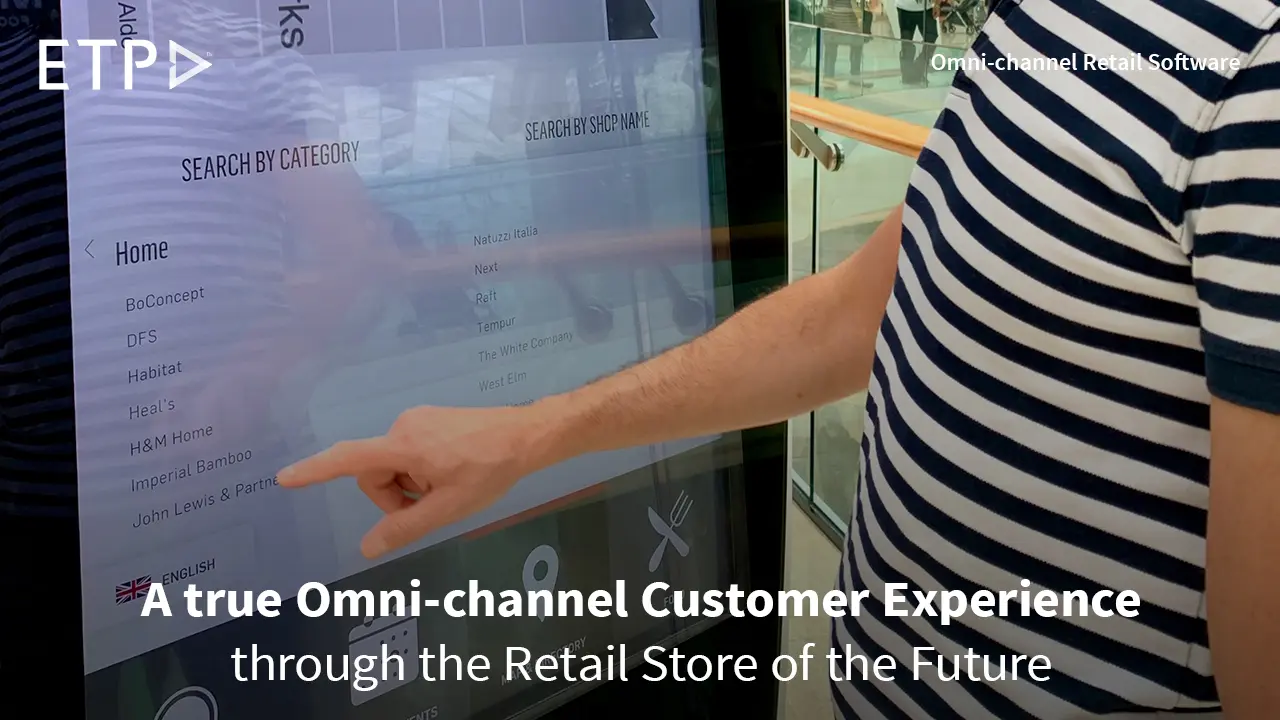
The retail industry has always been full of challenges. With the COVID-19 pandemic particularly highlighting these challenges, today’s market conditions combined with the fast-evolving customer expectations dictate that retailers should fast-track digital innovation and transform traditional business models.
Customer experience is the new competitive battleground, and those retailers who are able to harness the power of data and technology to enhance the customer experience are winning in this battle of growing customer loyalty and trust and gaining greater market share. Acting on customer insights and implementing changes in processes, technology, and mindset for the digitalization of customer journeys gives you the necessary momentum for long-term success in retail.
Transition to the low-touch digital store
In spite of the significant growth of the e-commerce channel, stores remain key touchpoints in the customer shopping journey and are still driving between 70% and 90% of total retail sales. In-store retention and engagement are critical to building loyalty and driving a higher volume of sales. However, your customers expect digital experiences that go beyond shopping, while always ensuring their safety.
ETP Omni-channel Retail Software supports retailers in offering convenience services, such as mPOS-enabled queue management solutions and frictionless payments. These help ensure your customers have a pleasant, minimum-touch shopping experience, and ultimately spend more. Mobile POS solutions in your stores enable you to improve customer flow and ensure safety measures like social distancing are followed.
Coupled with user-friendly, innovative retail digital transformation solutions such as Endless Aisle (digital product catalogue), in-store advance orders, and targeted promotions, you can be certain of supporting in-store digital customer journeys and improving in-store customer engagement. From development and deployment to managing periodical updates to your retail software suite, ETP’s consulting, global deliveries, and support teams will take care of every step and provide promised results.
Offer superior omnichannel shopping experiences to your customers
Retailers’ growth drivers are now more strongly linked than ever before to their capacity to integrate the new journeys of digital customers. However, many retailers still manage their offline and online sales channels in silos.
Our expert business consultants leverage our integration capabilities to help you map customer journeys and unify all of your sales channels, order management, payment processing, loyalty programs, delivery options, and more, both in-store and out-of-store. This will enable you to deliver the true omnichannel experiences that your customers expect.
Empower your workforce to succeed in its new role
As the role of the store is reinvented, in-store employees will have a part to play as personal advisors to shoppers. With ETP Mobile Store, you can give your employees access to the tools and applications they need to succeed in these roles. These will be accessible from anywhere through secure mobile terminals and cover CRM, inventory management, order management and more.
There is an ongoing competition to recruit, retain and develop the best talent, particularly among millennials, who value a great employee experience. ETP Omni-channel Retail Solutions can improve the collective knowledge and performance of your teams by facilitating better teamwork.
Additionally, retailers can avoid any skills gap resulting from high workforce turnover and give proper career perspective to their employees. The Orange Digital Academy and User Adoption Program offers flexible solutions that help you ensure your employees are trained and aware of new policies and processes, including the implications of new COVID-19 regulations.
Enhance your operations and drive growth with leading-edge technology
With consumers seeking the best of both worlds between physical and online shopping, retailers must prepare for a hybrid future. Adopting emerging technologies will help them transform their value propositions with respect to how they can improve their customer’s life, and make it easier and more fulfilling. A bold digital transformation strategy requires immense collaboration across technology ecosystems but it will help ensure success for the retail business in the long term.
Retailers typically operate a complex distributed network of business locations: offices, stores and distribution centres. At the stores, in addition to the POS, they put tablets, video, digital signs and other technologies to work simultaneously. These technologies are having a profound impact on the business performance and customer loyalty. It is crucial to ensure that the locations, channels, and devices are not operating in silos, and the data collected by each of them is not stored individually. Also, the new solutions should be able to access and understand the data stored in the legacy systems quite easily.
Balancing inventory assortments, managing orders and maintaining uniform pricing across channels requires you deploy retail technology that gives you one version of the truth about your inventory and your customers irrespective of the device or channel.
ETP Omni-channel Retail Software helps you apply more granular levels of control for specific business processes along the end-to-end integration, security and build/deploy service delivery chain. With omni-channel orchestration, you can directly determine the most preferred method of order fulfilment for each customer, personalise promotions for them based on merchandise, location, time and/or customer hierarchies, and manage third-party integrations with ERP/legacy/such other systems. This ensures you can deliver the agility and responsiveness required to enhance the shopping experience at all your business locations.
Furthermore, ETP Connect allows you to bridge your online and offline channels, costs and IT estate while ensuring that all services work in harmony with the required governance level.



















